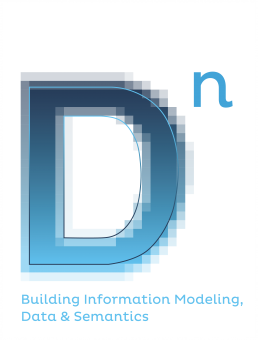For an update on the latest experimentation techniques and the new research goals achieved in the BIM and H-BIM fields, this issue contains articles that can provide numerous ideas for inspiration and very useful insights.
BIM is an innovative approach to thinking about the project, to deal with it in all its aspects, to optimize operational processes, to standardize the design in an exhaustive production cycle for all the players involved, from the designer to the client. And if until now it has been thought of exclusively associated with “Building”, today it finds applications in very different sectors, from infrastructures to smart cities.
At the basis of BIM development there is interoperability not only between the actors involved but above all between the software used by the same actors. Standardization, therefore, is particularly important in this process and, because of this, international service agencies have been set up in charge of researching the standardization of the BIM process from 1D to 7D in the Cultural Heritage sector, in the engineering sector and in the urban sector.
In recent years, the experiments published in international journals, conference proceedings and websites have been countless and always one step ahead of the previous ones. This magazine, on the national scene, plays a fundamental role in updating the experimental procedures conducted in the BIM field and this issue in particular, addresses the multiple BIM applications in a new and original way.
Take, for example, the experiments conducted by Valeria Croce who propose a new BIM methodology in synergy with Artificial Intelligence. The experimentation addresses the possibility of automating Scan-to-BIM workflows by combining semantic segmentation methods that take advantage of AI and graphical algorithm editors for 3D modeling. The ML algorithms, created by exploiting the appropriate manipulation, export and extraction of geometric and visual descriptors (features) from 2D or 3D raw data, significantly reduce the manual annotation phase, avoiding arbitrary and too subjective choices in the interpretative phase.
In the contribution of Cursi et al. a variety of applications of HBIM describe a methodology for the semantic enrichment of models through external resources, making explicit the documentary approach of the information system in which information is stored to preserve, share and transmit the constructive knowledge of the built and heritage in a computable digital environment.
Empler et al. propose a VR and AR experimentation in the Revixit Aquinum Baths where the communicative power of digital is the protagonist with 3D mapping experiments.
For the experimentation of an optimization procedure to verifying the state of conservation of the architectural asset, one can consult the contribution of Anna Sanseverino et al., where it is clear that the management of the historical heritage cannot disregard an accurate investigation of the state conservation of materials and a detailed 3D reconstruction. The morphological and colorimetric reconstruction of complex structures, elements and specific damaged areas in a BIM environment is essential for the development of databases suitable for data archiving and capable of supporting the planning of renovations and, in general, of any intervention on the property under study.
Another problem, not of little importance, is the one addressed by Graziano Mario Valenti and Alessandro Martinelli, linked to the representation in BIM of irregular serialities, very present in the historical architectural heritage, which is undoubtedly an increasingly emerging theme, the more the need to create models more and more adherent to the case study is growing.
Finally, the issue closes with the contribution of Elena D’Angelo and Michele Calvano where the interoperability between the BIM model and the Public Administration is analysed.
The themes of representation are therefore reconfigured through this collection of research, explaining how the theme of parametric modeling is changing the frontier of design towards an interoperability of models. The recalibration of the graphic components and the updating of the representative standards within the parametric modeling produce a renewed attention to the models themselves and to their possibility of representing reality and simplifying some aspects, as a critical synthesis, in favor of a greater baggage of contents that are associated with them.
Laura Inzerillo, Sandro Parrinello
